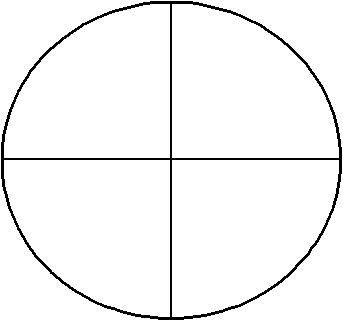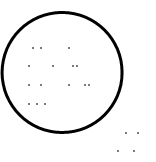Resource 2: Research on local games in the curriculum
![]() Background information / subject knowledge for teacher
Background information / subject knowledge for teacher
Nonhlanhla Shange is involved in research towards her master’s degree at the Nelson Mandela Unit for Rural Schooling at the University of Fort Hare in South Africa. She is researching the use of local games in the classroom, working at four rural schools.
The pupils and their teachers are carrying out action research into local games.
Teachers listen attentively and make notes of the games that are brought by pupils to class. They try to develop lessons based on the games. They keep journals, in which they reflect on how successful these lessons are, and try to improve on them with future attempts.
Descriptions of two games that were played as part of the research are below.
1. Circle game
Preparations for the game involve drawing a diagram like the one below on the ground.

How is the game played?
This game is played by small groups of five or six pupils. One pupil jumps inside the spaces, turning from side to side, while the other pupils sing a short song or rhyme, first in the local language, and then in English.
What learning activities were based on this game?
This game was developed to show how using repetition, in the children’s own language and in English, can aid learning. By using a different short song or rhyme, the game was also used to teach and practise pupils’ counting.
2. Stone game
Preparations for the game involve drawing a circle on the ground and putting a number of stones in the circle. (The circle should be no more than a metre in diameter.)

How is the game played?
Pupils are put into small groups of five or six. Each group has its own circle on the ground with stones inside it.
A player throws one stone up; before it falls to the ground, they must try to pick up other stones from within the circle.
- Every pupil in each group should assign themselves a number (below 10). This number is the number of stones that the player has to try and pick up.
- One player goes first. If the player picks up the required number of stones from the circle, they say the multiplication table of this number (for example, the 3 times table, stopping at 30 – this could be lower for younger pupils).
- If a player fails to pick up the required number of stones from the circle, they have to multiply the number of stones they have picked up by the number of stones they were supposed to pick up, and come up with a correct answer. For example, if they were supposed to pick up 5 stones, but only picked up 3, they would have to give the correct answer to the sum 5 x 3.
- The other players will judge whether they are giving the right or wrong answer.
What learning activities were based on this game?
This game was used to practise pupils’ skills at multiplication.
Original source: Shange, N., Nelson Mandela Foundation’s Unit for Rural Schooling and Development [unpublished research]
Resource 1: Action-reflection cycle



